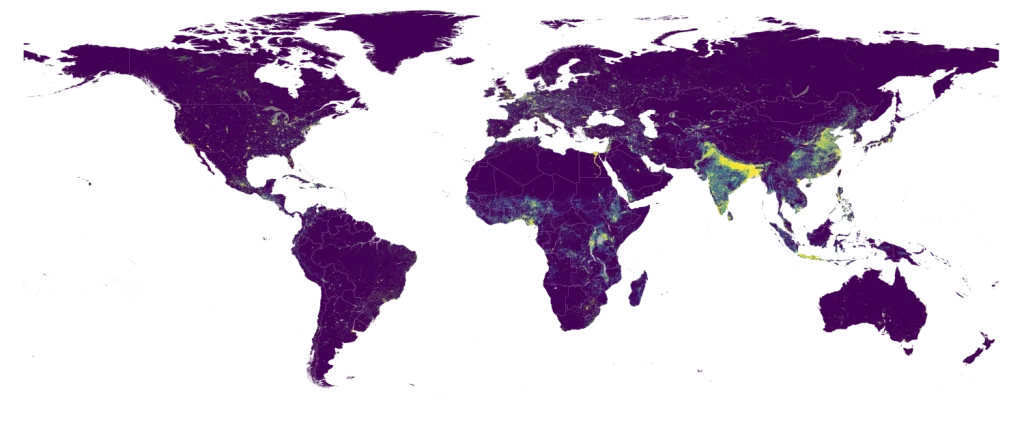Our new global population datasets covering 15 years from 2015 to 2030 are now freely available to download on the Humanitarian Data Exchange (HDX) website. Following two years of development funded by the Gates Foundation and in collaboration with Jade University of Applied Sciences and the University of Milan, we are pleased to release these new datasets for Beta testing; aiming for a full launch next month.
To produce these new datasets, population data matched to sub-national boundaries were collected from the 2010 and 2020 census rounds. These were supplemented with boundary-matched estimates from UN common operational datasets, US Census Bureau projections and official estimates, where census counts were lacking. A variety of demographic methods were applied to interpolate the age and sex-disaggregated totals between years and project up to 2030, with national totals aligned to the latest UN World Population Prospects estimates. These boundary-matched time series of data were then spatially disaggregated using machine learning models to a consistent 100x100m grid, based on a new library of multitemporal geospatial covariates, including building footprints extracted from satellite imagery using AI approaches.

The collection includes two new datasets for all countries: counts of total population, and their disaggregation into age and sex classes. These datasets represent estimates of residential population for each year from 2015 to 2030 for every 100x100m grid cell. Estimates of total number of people per grid square broken down by sex and age groupings (including 0-1 and by 5-year class up to 90+ years of age) are included, ‘constrained’ to areas of human settlement, and datasets are available to download in GeoTIFF format at a resolution of 3 arc (approximately 100m at the equator). The projection is Geographic Coordinate System, WGS84, and the units are estimated number of male, female or both in each age group per grid square.
If you have any questions about our new datasets, please let us know if by using our online form.
Further information
We produce multiple different types of spatial demographic datasets to meet different needs and applications, and we recommend you review our Choosing the right WorldPop population data for you advice page to assess if these new global data meet your needs.
To find out about the difference between constrained and unconstrained please review our Top down constrained vs Unconstrained information page.


